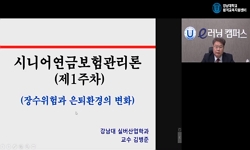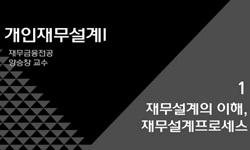This study aims to examine whether the decisions of employers to invest in risky assets are related to workplace characteristics such as the number of employees, types of industries, and retirement pension types. The study utilizes individual-level da...
http://chineseinput.net/에서 pinyin(병음)방식으로 중국어를 변환할 수 있습니다.
변환된 중국어를 복사하여 사용하시면 됩니다.
- 中文 을 입력하시려면 zhongwen을 입력하시고 space를누르시면됩니다.
- 北京 을 입력하시려면 beijing을 입력하시고 space를 누르시면 됩니다.

퇴직연금에서의 위험자산 선택요인 분석: 사업장 특성을 중심으로 = Do Workplace Characteristics Affect Employers Investing in Risky Assets?
한글로보기https://www.riss.kr/link?id=A108648197
-
저자
최수정 (숭실대학교)

- 발행기관
- 학술지명
- 권호사항
-
발행연도
2023
-
작성언어
Korean
-
주제어
퇴직연금 ; IRP ; 동료효과 ; 직장정보 ; 마이크로데이터서비스(MDIS) ; Retirement Pension Plans ; IRP ; Peer Effects ; Workplace Characteristics ; MDIS
-
등재정보
KCI등재
-
자료형태
학술저널
-
수록면
89-108(20쪽)
- DOI식별코드
- 제공처
-
0
상세조회 -
0
다운로드
부가정보
다국어 초록 (Multilingual Abstract)
This study aims to examine whether the decisions of employers to invest in risky assets are related to workplace characteristics such as the number of employees, types of industries, and retirement pension types. The study utilizes individual-level data from Individual Retirement Pension Plan (IRP), Defined Contribution Plan (DC), and firm IRP accounts that are self-managed by employers in the workplace. However, individual DB balance cannot be identified because Defined Benefit Plan (DB) accounts are managed by the firm in aggregate. The data was obtained from the Korean Statistical Information Service (KOSIS) for the period 2015 to 2020 through the authorized Microdata Integrated Service (MDIS). Previous literature has documented a peer effect in investing in risky assets, which appears strongly among investors who earn relatively higher disposable incomes and among males. The study finds that employers who work in large-sized and well-compensated firms are more likely to invest in risky assets, particularly male employers who are older, have longer work period, and work in industries requiring a high level of financial literacy. This result indirectly supports the peer effect in choosing risky assets in their retirement pension plan for employers. Interestingly, the study also finds that DB holders are less likely to invest in risky assets through their IRP accounts than DC or firm IRP holders. However, once they start investing in risky assets, the proportion of risky assets relative to the total balance is higher than others. Overall, this study provides comprehensive insights into the determinants of investing in risky assets by employers, utilizing individual-level data and workplace information.
국문 초록 (Abstract)
본 연구는 통계청에서 제공하는 승인형 퇴직연금 마이크로데이터(MDIS)를 분석하여 직장정보가 존재하는 개인 IRP 계좌 보유자를 대상으로 사업장 특성이 근로자들의 위험자산 선택과 관련이...
본 연구는 통계청에서 제공하는 승인형 퇴직연금 마이크로데이터(MDIS)를 분석하여 직장정보가 존재하는 개인 IRP 계좌 보유자를 대상으로 사업장 특성이 근로자들의 위험자산 선택과 관련이 있는지 살펴보았다. DB 적립금의 경우 가입자별 계좌 금액이 별도로 보고되지 않지만, DC, 기업형 IRP, 개인 IRP는 가입자별 계좌 잔액이 보고되어 개인 IRP 계좌 잔액만 분석한 최수정(2022)보다 좀 더 폭넓게 개인별 위험자산 투자현황 및 위험자산 선호 여부를 확인할 수 있었다. 본 연구에서 위험자산 금액은 계좌 총 잔액에서 원리금보장형 상품 잔액과 계좌 내 대기성자금을 제외한 원리금비보장(실적배당)형 상품 잔액으로 정의하였다. 개인의 위험자산 선택 여부는 동료의 위험자산 선택 여부에 크게 좌우되며, 이러한 동료효과(peer effect)는 성별 및 연령 요인과 함께 개인이 위험자산을 선택하는 주요한 요인일 수 있으므로 사업장 특성 분석을 통해 위험자산 선택에 있어서 동료효과의 존재를 간접적으로 검토하고자 했다. 기존 연구에 따르면, 가처분소득이 높은 남성들에게 동료효과가 강하게 나타나는데, 본 연구에서도 기업의 규모가 크고 평균소득이 높은 산업군에서 위험자산을 선택하는 경우가 많았고 보유금액도 높게 나타났다. 즉, 근속기간이 길수록, 근로자 연령이 높을수록, 사업장 규모가 클수록, 여성보다는 남성 근로자가 더 위험자산을 선택 및 많이 보유하였으며, 다른 퇴직연금 가입자들에 비해서 DB 가입자들의 경우 평균적으로 개인 IRP 계좌에서 위험자산에 투자하지 않거나 적게 보유했지만, 일단 위험자산을 1원 이상 보유한 경우 위험자산에 더 많이 투자하는 경향이 존재했다.
동일학술지(권/호) 다른 논문
-
- 한국금융정보학회
- 이동행
- 2023
- KCI등재
-
발행 및 유통시장에서 ESG 채권의 가격 프리미엄에 대한 연구
- 한국금융정보학회
- 전진규
- 2023
- KCI등재
-
- 한국금융정보학회
- 서기수
- 2023
- KCI등재
-
비금융 대안정보의 신용리스크 예측에 미치는 효과: 미시데이터 기반의 실증분석과 이의 시사점
- 한국금융정보학회
- 김영일
- 2023
- KCI등재




 KCI
KCI KISS
KISS






